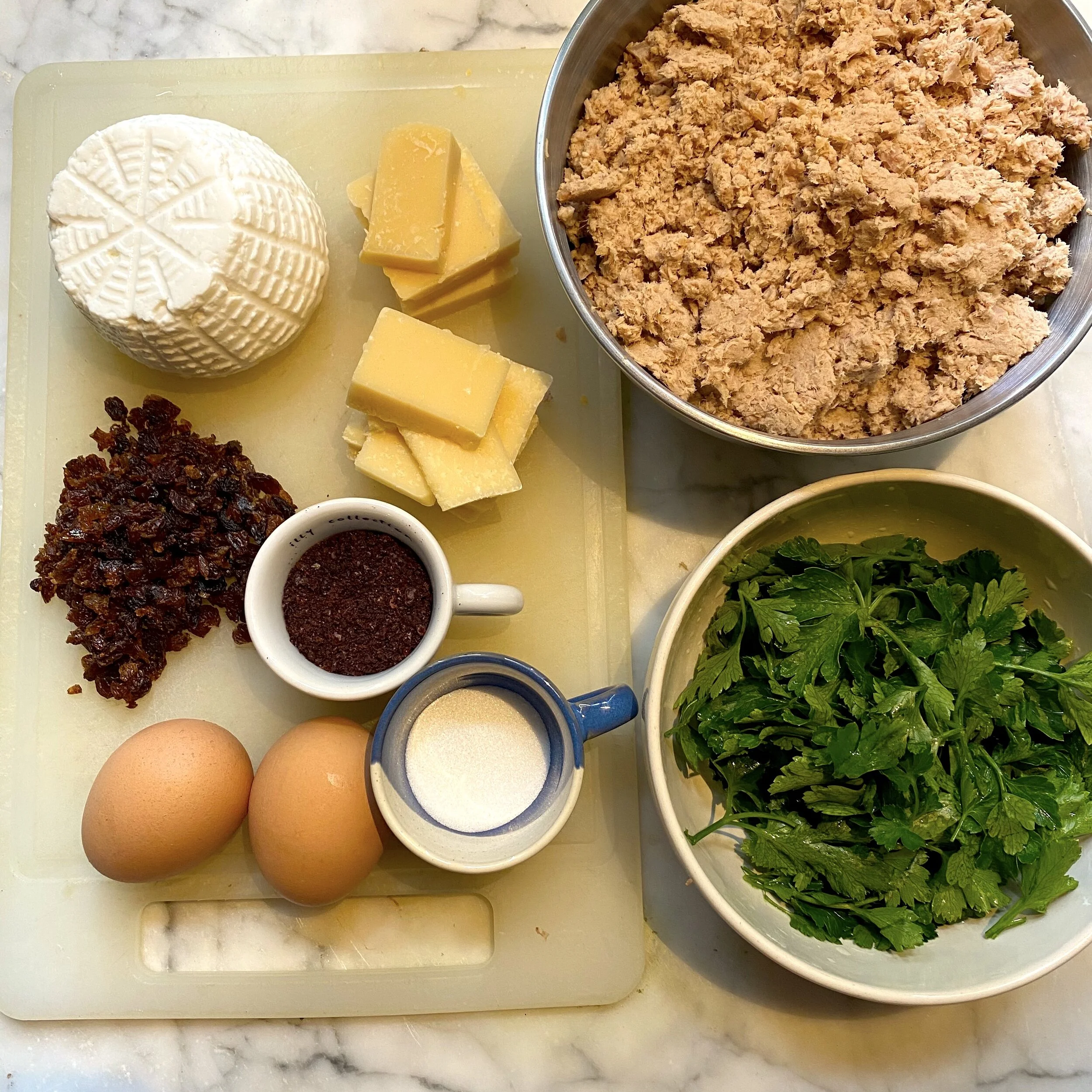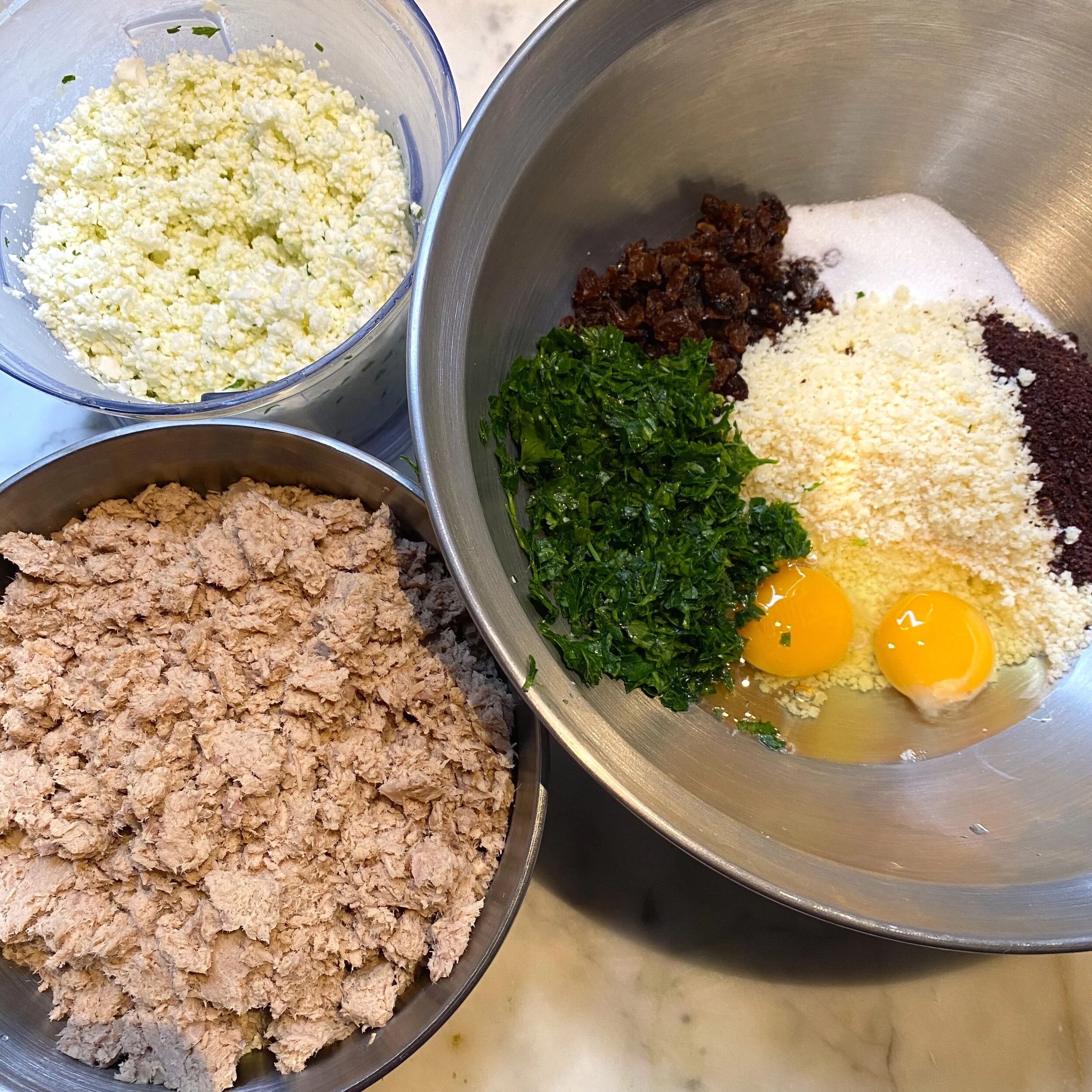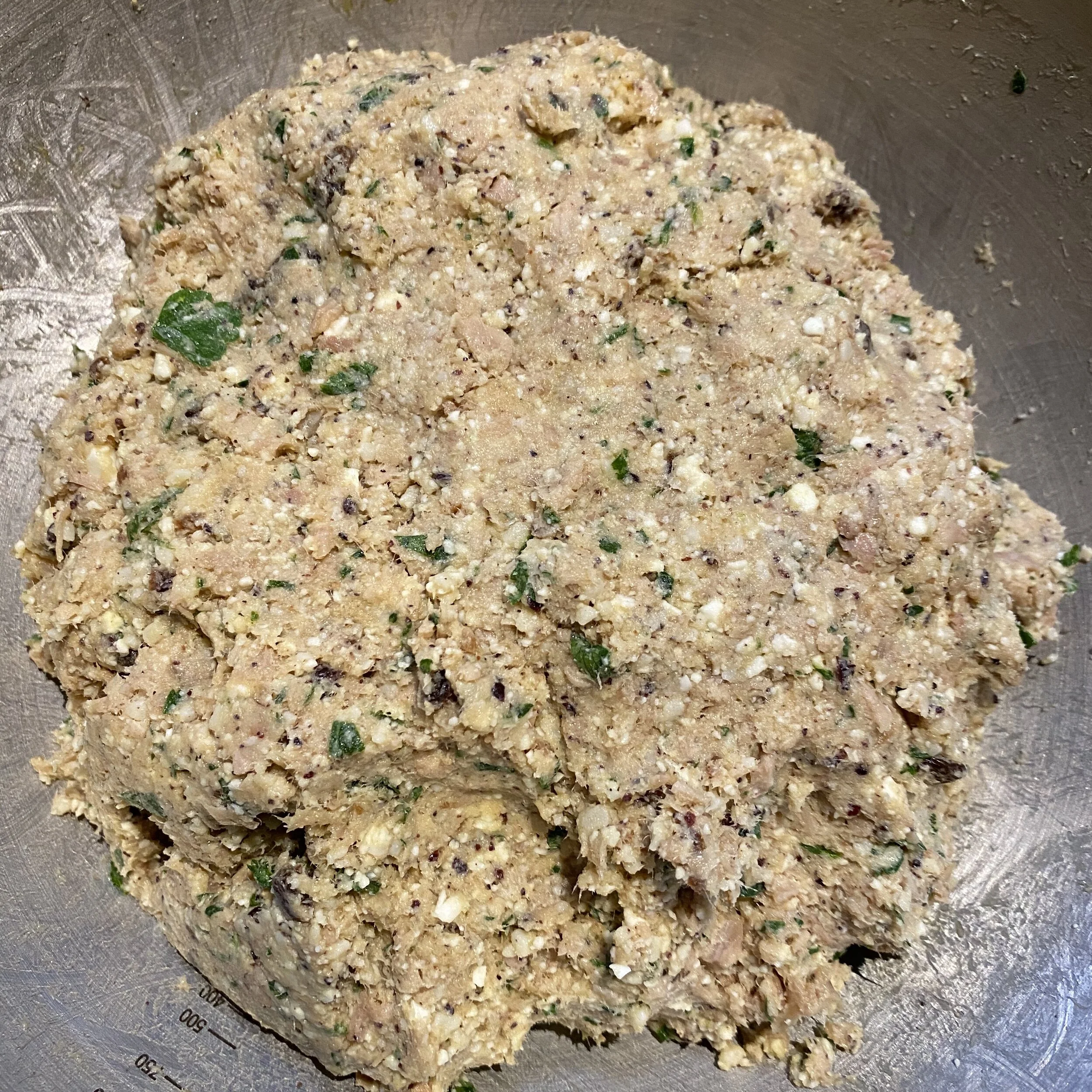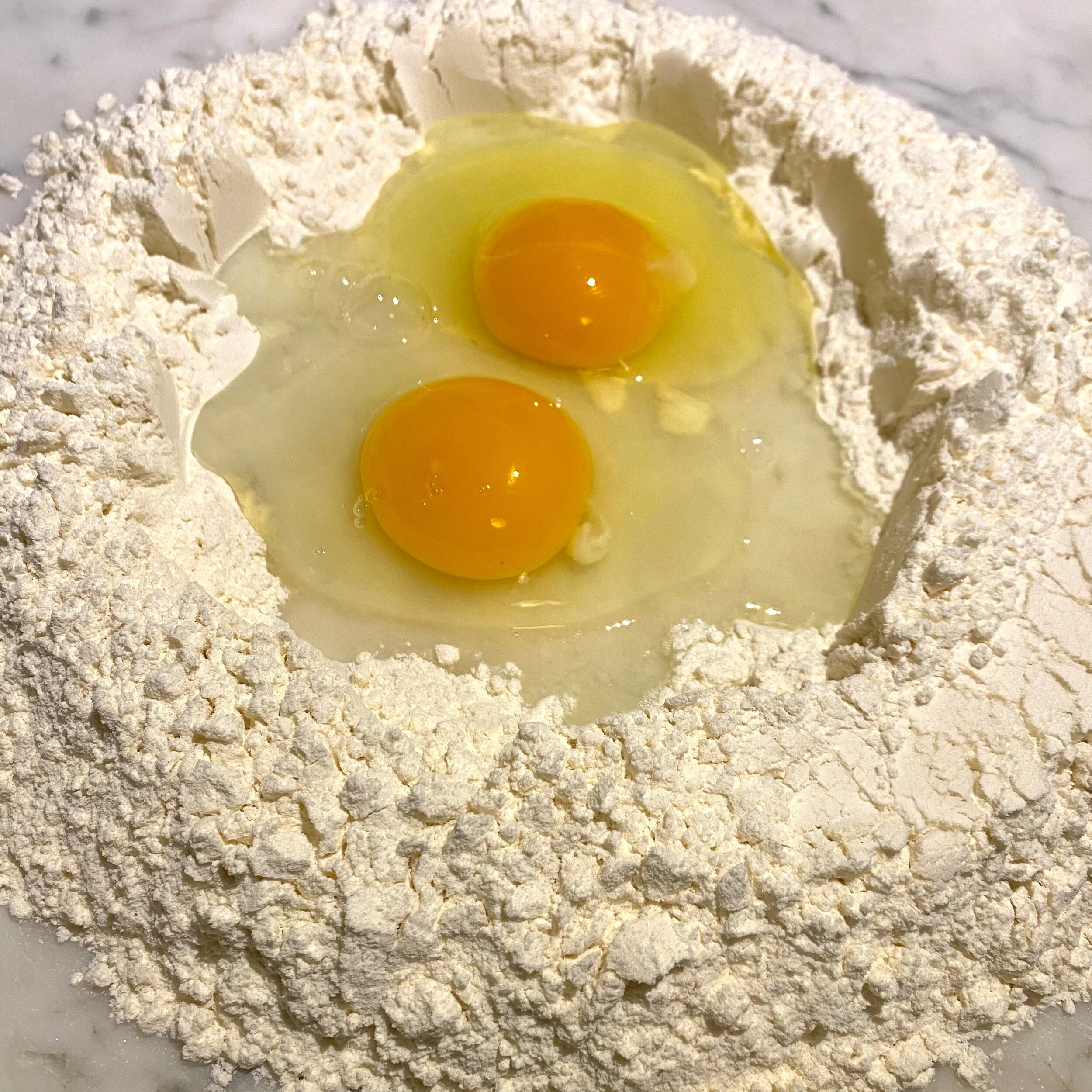This post was created as a tribute to the US National Ravioli Day… as good an excuse as any to indulge in this most delectable of foods!
The origin of the word ‘ravioli’ is unknown, but the first known Italian recipes are recorded in the collection referred to as Anonymous Venetian or Libro per cuoco. It has been dated to the late 14th century and had been all but forgotten until a print copy was published in 1899 in Livorno as part of the series: “Collection of Historical and Literary Rarities.” An original manuscript is in the Biblioteca Casanatense in Rome, and I am hoping to make the pilgrimage to see it one day.
The three recipes for ravioli, or rafioli as they are referred to in this text, are all quite different from one another. The first is with meat and cheese - but is without the pasta wrapper - indeed, at that moment on the culinary timeline, it was considered an ‘extra’ rather than a ‘plus,’ a coating that was not necessary to the concept. Therefore, a ‘raviolo’ (singular) was really the interior morsel, the pasta was merely a variation on the theme, like breading.
Not only that, but these ravioli morsels were often fried in lard then sprinkled with a spice mix and/or sugar. To our great fortune, this unknown Venetian chef/author leaves us with three very different representative samples of what ravioli meant in the 1300s: a small fried meat and cheese croquette, a greens and cheese bite wrapped in pasta, and large puffy fried cheese balls.
Shall we proceed?
The first recipe is called Fried ravioli, etc. The ‘etc.’ part indicates that this is the first recipe of three in the same genre. This one combines pork and cheese but adds a sweet and sour element with sumac and sugar. He specifies frying them in “grease,” but doesn’t explicitly spell out the fat source. The historian sleuth will want to make note of this for when we get to the third recipe.
LXII - Rafioli fritti, etc.
Makes about 70 small patties (they freeze well)
Ingredients:
500g lean pork, cubed
175g ricotta
175g freshly grated parmesan cheese
25g raisins, chopped
25g parsley, finely chopped
1 1/2 tbsp sumac
1 tsp sugar, divided
salt to taste
oil or lard for shallow (but submerged) frying
Instructions:
Stew the pork until tender. Process it in whatever sort of machine you have until fine.
Mix with the other ingredients and form into 1 tbsp-sized patties.
Pour 2cm of oil into a skillet. When it is around 180°C, fry the patties.
Rafioli fritti ready to serve.
Sprinkle with sugar and serve hot. These make great appetizers.
The second recipe is called Rafioli commun de herbe vantazati. Those of you familiar with Italian may recognize that this is a northern medieval dialect and not standard Italian and translates as “common ravioli with mixed greens.” Except for the classic addition of the medieval spice mix, these are identical to the most common form of ravioli eaten in Italy today - spinach and ricotta.
For the greens, I went with the classic spinach but took a walk down to the Tiber to forage some borage which has just come into season. As we are in lockdown while I am writing this, I had to be furtive and get right home.
Freshly picked spinach and borage.
LXIII - Rafioli commun de herbe vantazati
Ingredients:
200g mixed fresh greens
125g ricotta
50g parmesan cheese, grated (extra for sprinkling)
1 tsp (or more) sweet spice mix - half for the filling
pinch of salt
4 tbsp butter
450g fresh pasta dough -
I always roll out my pasta by hand. That may require equipment, ability, and/or time that you don’t have. You can follow any standard recipe for pasta and use whatever machine you prefer, so long as you end up with very thin sheets of dough. Store bought raw lasagna cannot be substituted.
My recipe here is 300g type 0 flour, 2 eggs + water so that the latter two together weigh 150g.
Instructions:
Prepare the pasta dough. Wrap it and let it rest while you make the filling.
Boil the greens and squeeze them out really well. They should weigh about 150g afterwards.
Chop the greens well and add them to the other filling ingredients (excluding the butter or dough).
Cut the pasta into squares about 4cm square. Place about a teaspoon of filling on, fold them over and seal them tightly. Be sure not to trap air in the parcel. I chose to shape them like pansotti, but you can do squares if you choose.
Have a large pot of salted water on the boil and carefully put all of the ravioli in.
Melt butter in a large skillet. When the pasta is cooked, fish it out with a strainer and continue cooking in the skillet, tossing it in the butter until most of the water has cooked away.
To serve, place them in individual pasta dishes or on a warm serving platter and cover well with parmesan cheese and the sweet spice mix. Don’t be timid with the latter!
LXIV - Rafioli per altro modo e chiamasse licaproprii
The translation of this rather lackluster title here is “Another sort of ravioli called…” hmmm, that last word in like a noun akin to ‘finger-licking good.’ It clearly made reference to a food known in the local area by that name, but its origin has been lost in the folds of time.
What we are dealing with here basically is big cheese puffs.
A note on cheese:
One problem that arises in interpreting historical Italian recipes is knowing what cheese they used - as it is never directly spelled out. The descriptive terms are “fatty,” “sweet,” “fresh,” “aged” and so on, but no specific names are given. In this case, the author calls for a formayo frescho ben dolze. I chose to use a primo sale, fresh cheese that has been through the first phase of production - a first salting - but has not been aged at all; it is rubbery rather than creamy and would therefore melt but have some body, unlike ricotta. A fresh mozzarella may be a suitable substitute, or if you are really ambitious you can make it at home - rather like paneer. In the image below, as shown, I used both a goats milk primo sale and one made of cows milk.
Ingredients:
250g fresh cheese
10g flour (1 tbsp) plus extra for shaping
1 egg white
pinch of salt
fat for deep-frying
powdered or granulated sugar
Instructions:
In whatever sort of machine you have, process the ingredients together (except the oil and sugar) until it has a whipped consistency.
Prepare a pan of fat to fry the ravioli. The recipe specifies lard. Do as you see fit. Heat the oil to around, but no higher than 180°C.
Flour your hands and shape balls so that they are approximately 50g each. Our author says “big and round as apples” but consider that apples were smaller then.
I find that if they are left to sit for a half hour, they maintain their shape better. Otherwise, as they fry they will expand and risk becoming misshapen or losing their internal contents.
Set the balls carefully into the hot oil and after they start to set, very gently keep them moving around in the fat. They should fry slowly for about five minutes until golden brown.
To finish, you can either very carefully turn them in a bag or bowl of sugar or simply sprinkle them on top with a little powdered sugar to serve. Best eaten hot.
My initial purpose in making these was as a historian, purely for research purposes. I was skeptical about how they would hold together and relatively certain that they would not be to my liking. But quite the contrary, they were a revelation. I serve them with candied citron peel, a match made in heaven.

























